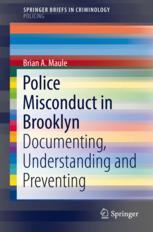

Most ebook files are in PDF format, so you can easily read them using various software such as Foxit Reader or directly on the Google Chrome browser.
Some ebook files are released by publishers in other formats such as .awz, .mobi, .epub, .fb2, etc. You may need to install specific software to read these formats on mobile/PC, such as Calibre.
Please read the tutorial at this link: https://ebookbell.com/faq
We offer FREE conversion to the popular formats you request; however, this may take some time. Therefore, right after payment, please email us, and we will try to provide the service as quickly as possible.
For some exceptional file formats or broken links (if any), please refrain from opening any disputes. Instead, email us first, and we will try to assist within a maximum of 6 hours.
EbookBell Team

4.4
12 reviewsThis Brief explores police misconduct, through the lens of a 5-year study of civil liability cases against the New York Police Department in Kings County (Brooklyn), New York. The confluence of police misconduct and civil liability is an issue of growing concern for many communities throughout the United States. One measure of the severity of these concerns is the increase in the number of lawsuits alleging police misconduct and the civil liability resulting from these lawsuits.
Using Brooklyn, New York as a case study, the author of this Brief uses lawsuits that resulted in a settlement or jury award, over a five-year period, as its measure of police misconduct. Police misconduct has many tangible and intangible consequences for a community, such as violations of the law, police brutality, social consequences, and long-term public trust of the police. On a very practical level, as the author demonstrates, the up-front financial costs of prevention, training, and support to curb police misconduct are less expensive than the costs of civil liability payments for lawsuits.
This perspective creates a strong argument for policymakers for enhancing police training and police misconduct prevention programs. This work will be of interest to researchers in police studies, as well sociology and public policy.